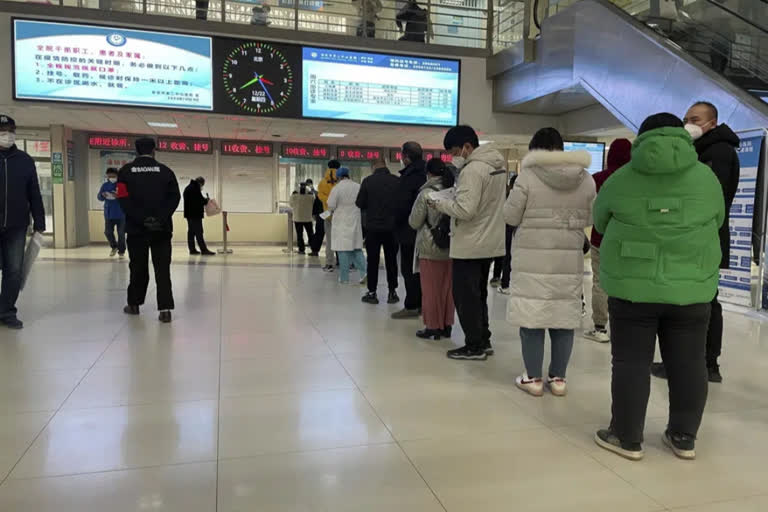Geneva: The head of the World Health Organisation said the agency is very concerned about rising reports of severe coronavirus disease across China after the country largely abandoned its zero COVID policy, warning that its lagging vaccination rate could result in large numbers of vulnerable people getting infected.
At a press briefing on Wednesday, WHO Director-General Tedros Adhanom Ghebreyesus said the UN agency needs more information on COVID-19 severity in China, particularly regarding hospital and intensive care unit admissions, in order to make a comprehensive risk assessment of the situation on the ground. WHO is very concerned over the evolving situation in China with increasing reports of severe disease, Tedros said. He added that while COVID deaths have dropped more than 90% since their global peak, there were still too many uncertainties about the virus to conclude that the pandemic is over.
Some scientists have warned that the unchecked spread of COVID-19 in China could spur the emergence of new variants, which might unravel progress made globally to contain the pandemic. Vaccination is the exit strategy from omicron, WHO emergencies chief Dr. Michael Ryan said. Ryan said the explosive surge of cases in China was not exclusively due to the lifting of many of the country's restrictive policies and that it was impossible to stop transmission of omicron, the most highly infectious variant yet seen of COVID-19.
He said vaccination rates among people over age 60 in China lagged behind many other countries and that the efficacy of the Chinese-made vaccines was about 50%. That's just not adequate protection in a population as large as China, with so many vulnerable people, Ryan said. He added that while China has dramatically increased its capacity to vaccinate people in recent weeks, it's unclear whether that will be enough.
To date, China has declined to authorize Western-made messenger RNA vaccines, which have proven to be more effective than its locally made shots. Beijing did agree to allow a shipment of the BioNTech-Pfizer vaccine to be imported, for Germans living in China. The question remains whether or not enough vaccination can be done in the coming week or two weeks that will actually blunt the impact of the second wave and the burden on the health system, Ryan said.
Like Tedros, he said WHO had insufficient information about the extent of severe disease and hospitalization, but he noted that nearly all countries overwhelmed by COVID-19 had struggled to share such real-time data. Ryan also suggested China's definition of COVID deaths was too narrow, saying the country was limiting it to people who have suffered respiratory failure.
People who die of COVID die from many different (organ) systems' failures, given the severity of infection, Ryan said. So limiting a diagnosis of death from COVID to someone with a COVID positive test and respiratory failure will very much underestimate the true death toll associated with COVID. Countries such as Britain, for example, define any COVID death as someone who has died within 28 days of testing positive for the virus. Globally, nearly every country has grappled with how to count COVID deaths, and official numbers are believed to be a major underestimate. In May, WHO estimated there were nearly 15 million coronavirus deaths worldwide, more than double the official toll of 6 million. (AP)



